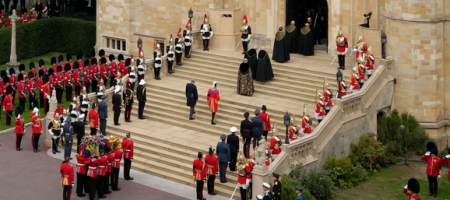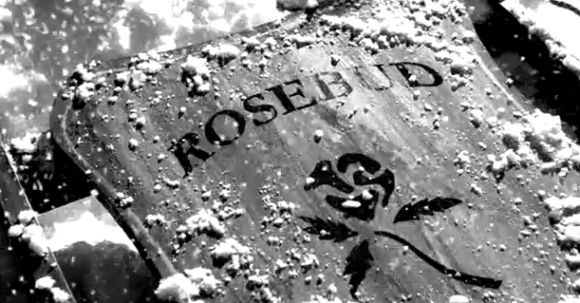
Queen Elizabeth dominated the news for several days if not longer. For a brief moment, the world saw Great Britain at its best. We saw its palaces, churches, and chapels. We watched its processions. We witnessed its people stand patiently in astonishingly long lines for hours on end for their turn to glimpse and pay their respects to their Queen. Truly it was an inspiring series of days that highlighted the good with which people are capable. Perhaps once could say it was Great Britain’s finest hour since its last finest hour in far more troubling times.
Simultaneously, I was attending two history conferences in New York State with sessions devoted to the American Revolution 250th. The first was in Buffalo where the annual national conference of the American Association for State and Local History (AASLH) was held partially in person with a separate on-line conference to follow. The second was the annual state conference of the Association of the Public Historians of New York State (APHNYS) held this year in Kingston.
During the American Revolution, Kingston was a settlement burned by the British as part of the ill-fated campaign of John Burgoyne to sever the states. At that time, Buffalo was located beyond the range of American colonial settlement. The Seneca who lived there were allies of the British even to the point of fighting their fellow Haudenosaunee Oneida who were America’s first ally. As part of the conference, I signed up for an optional tour of the OnÖhsagwË De’ Cultural Center better known in English after the English name of the famed Roman orator.
The unexpected juxtaposition of these events provided an opportunity to think historically and politically about them.
AMERICAN REVOLUTION 250TH
Obviously during the American Revolution, the British were our enemy. Even as we honored the life of the British Queen at her death, we remember that here in New York, an iconic symbol of the American Revolution is the toppling of the recently-installed statue of King George III at the Battery in lower Manhattan.
We also recall the prison ships offshore in the Hudson River where arguably more Americans died at the hands of the British than did on the field of battle.
We remember the city where we were meeting as a city the British had burned. The burning of this one-time capital of New York State was a preview to the burning of the national capital in the next round of conflict between the two countries.
We remember that for seven years, the British occupied the city of New York. They continued to do so throughout the war even past the fighting at Yorktown. The reason George Washington spent more time during the American Revolution in New York than in any other state was precisely because of his fear that the still-present British might try something. We should remember Benedict Arnold in that context.
And finally we remember when at last after seven years, the British evacuated the city on November 25, 1783. Loyalists including Africans who had fought on behalf of the British left for Canada. The day would be become a holiday enthusiastically celebrated in New York City into the 20th century.
Eventually, of course, the United States and the United Kingdom became friends and allies. Their culture became intertwined with our culture. From Sherlock Holmes to 007 to the Beatles to Middle Earth to Harry Potter, it often became difficult to determine where one culture began and the other ended. (Americans would not wait patiently for hours on end without a squabble for anything yet alone a funeral procession.)
One driving force in this new-found friendship was the sharing of a common enemy – Germany in World War I, Nazi Germany in World War II, and the Soviet Union in World War III, the Cold War. In this face of common enemies that threatened us, the bloody differences of the American Revolution and the War of 1812 become secondary, part of the past we could move beyond. Now the same issue faces the members of the British Empire now Commonwealth.
THE QUEEN IS DEAD: WHY SHOULD I MOURN?
In the United States, Frederick Douglass famously asked what the Declaration of Independence should mean to him. Yet despite the horrors of slavery in the United States, he never abandoned his American identity. A similar situation arises now for individuals and countries which once were part of the British Empire but are no more or which have the British monarchy as the nominal head of state but contemplate leaving.
Prince Charles recently experienced some of this feelings in his own visits to the lands/islands of the British Empire. Undoubtedly, once the hoopla of the Queen Elisabeth funeral fades, as King Charles III, he will have to face the new world order within the lands once ruled by Great Britain. He will have to deal with the human cost of imperial rule. The numbers vary tremendously from the 18th-century conflict with the United States and the 19th and 20th century conflicts with the global colonies. The differences in firepower from the former to the latter and between the British and their foes led to the deaths of far more people than in our American Revolution.
Similarly, there was a vast difference in the economic relationships. Back in the 18th century, the United States had little to plunder in comparison with other parts of the Empire especially the sugar from the Caribbean. The opportunity for exploitation was limited.
So today when individuals and countries challenge the British legacy, they have ample grounds to do so. We are at the beginning of a process that may or may not end in healing. As king, there are limits to what Charles III can do. Even beyond his institutional power, he lacks the international appeal of his children and their spouses. Nonetheless, collectively they have an opportunity to re-cast the relationship between the countries of the former British Empire. Whether they will try and whether they will succeed if they do try remains to be seen.
PAKISTAN
As the United States entered the global arena, it found it had shared interests with the Mother Country. Those interests continued to develop and strengthen over the course of the 20th century. It reached the point that one took for granted that the American President would attend the funeral for the Queen whose country fought us twice.
A new enemy may bring together the countries of the British Empire in ways no one anticipated. Pakistan was part of the Crown Jewel of the Empire, the Indian subcontinent that caused the Suez Canal to be built. Unfortunately, Pakistan has been in the news for all the wrongs reasons in recent weeks as well. The unimaginable damage and destruction from flooding makes sheer survival the number one challenge for country. Other parts of the former British Empire especially islands similarly are facing catastrophes on an unprecedented scale.
Truly it may be said in a time of climate change, we are all in this together. While not everyone has heard and absorbed the message, the high temperatures, droughts, and floods make it increasingly necessary for people both to live in the real world and to work together. Just as We the People learned to live with and become partners with our former adversary, so too it will become necessary for the countries of the former British Empire to learn to work together. I predict that when we celebrate the declaration of our independence from Great Britain, the latter will participate in the ceremony just as the President of the United States did in the funeral of Queen Elizabeth. One hopes that in the face of this new global threat, the same will be true for the lands Britain ruled and the country that ruled them.






